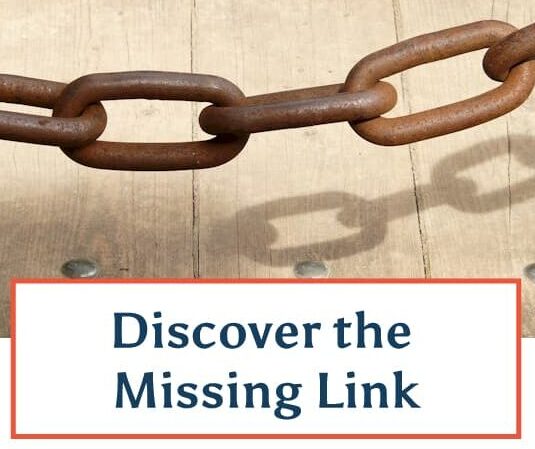I LOVE reading about the psychology of marketing!
Have you read The Art of Choosing by Sheena Iyengar? She’s a social psychologist and a professor of business at Columbia University. She studies how people make decisions, which all small business owners can apply immediately when you market your services and products.
It’s an especially helpful book when trying to understand how customers make choices.
Iyengar conducted a series of studies about the psychological factors in decision-making. The best part about the results of the studies is that you can use the information in your marketing and sales efforts right away.
Here are top seven highlights from the book which will help you immediately:
- Customers like to feel they are unique and not “just like everyone else.” This, of course, isn’t true: as human beings, we’re more alike in our buying behavior than we realize. However, customers want to appear as if they each, individually, make unique buying decisions different from their peers. For instance, if two people would normally choose the same meal at a restaurant, studies show that when one person gives her order, the second person will change her order so that she doesn’t appear to be a copycat. If everyone at the Apple store is buying a white iPhone, all of a sudden people will begin to buy black iPhones. But when customers choose this way, they are less satisfied with their choice. This is more apparent at in-person events than in situations like online shopping (where you can’t see the other person and can’t be judged by the other person). Takeaway: In face-to-face contact with your customers and colleagues, how they perceive their individual identity matters. Don’t tell them they’re “just like every one of my customers.”
- Customers do take copywriting puffery seriously, even though logically they shouldn’t. They’ll buy bottled water that they know, intellectually, comes from municipal tap water that’s been created via reverse osmosis. They buy into claims that the water is especially refreshing (all water is refreshing) or that it’s bottled at the source (in this case, the “source” is municipal water) or that it’s “expertly designed water” (does it need any further design than the original H2O formula we’ve been using for so long?? Apparently, yes.). That’s why Dasani’s website focuses not on the water, but on the bottle the water comes in: 30% plant material, 100% recyclable. Takeaway: Even though the customer intellectually knows not to fall for marketing copy, they still do. They want the experience that buying and using the product will bring. You, as the marketer, get to define that experience for them through your copywriting and your branding efforts.
- We take into our psyche the words we read and hear from marketing copy. Researchers asked people to construct a sentence using five words they were given. When researchers gave them five words that related to the elderly (old, gray, wrinkle, Florida, bingo), the participants took 15% longer to walk to the elevator when they exited the survey room. Our autonomic nervous system connects pre-existing knowledge with what we’re seeing and hearing right now. Takeaway: Think about how you want your audience to feel and act after they interact with you, your blog, your marketing, and even your social media comments in Facebook and Twitter, and use words that will conjure up that feeling in their minds. If your brand is about “passion,” don’t use words like “slow” or “creepy” when connecting casually with your audience…or they’ll connect it with you and your biz.
- Even a small amount of choice brings a sense of well-being to customers. Several studies showed that when participants were given a choice versus being told what to do, those who were given a choice (even the smallest, simplest of choices, like which night to watch a movie), made people feel better about the situation. Takeaway: In your marketing, where can you give them choices instead of only one option?
- Customers get overwhelmed by too much information. In 1956, George Miller conducted his famous study that concluded that people can process only seven pieces of information (plus or minus two). We are limited in our capacity to process information. When you give people too much to think about, they shut down. We simply can’t keep track of multiple objects or facts. Takeaway: When listing the benefits or features of your site, limit the bullet-point list to 5-7 items. If you have more than seven, create a second list with a new title, like, “Here’s even more reasons to buy our service!”
- When you give customers too many options, they are (at first) attracted to the most options they can see. But when it comes to buying, people purchase less when they have too many options to choose from. When given a choice of 24 jams flavors, only 3% of the people purchased jam. But when given only three choices of jam flavors, 30% purchase jam. Takeaway: Be careful of how many choices you give customers. At first, they may be attracted to your full array of offerings, but when it comes to buying, having too many options may hurt sales.
- If you have to give them options, help them to choose from among the options. Help them to figure out the best way of sorting, comparing and eliminating options. Takeaway: Create a chart about which program they should purchase (from among several), or an article about the pros and cons of different products that will help them and increase customer loyalty. Organize their choices for them.

 Designing Your Perfect Week
Designing Your Perfect Week

Nice article, I like your insights. The point about limiting the choices is really good, sometimes we want to list everything, but everything can be overwhelming. I think confusing them is worse than having nothing listed.
This is fascinating, espcially the part about giving them too many options. Last year my husband and I went car shopping. There were so many options and extras to choose from that I found my head swimming and I really, truly just wanted to walk away without buying anything.
This article just goes to show how truly important it is to market your product or service. Marketing puffery may go against your better judgements but it does indeed work on behalf of your business.
Karyn,
What a great article! Thank you! I know I offer quite a few options to help my clients, with their image. I always do my best in helping them clarify thier goals, but this article
is a great reminder to once again focus on one or two solutions during our conversations.
I’m glad you liked the post. 🙂 I find that the moment I finish reading a business book, I want to share what I learned with everyone! This way, I can take the Top Seven Tips from the book and blog about them. If you found the tips helpful, you can buy or borrow the book, or just use the tips “as is” in your business and marketing.
This article has given me the smart information I needed at the perfect time. Just like all lessons, we learn line upon line; precept upon precept as knowledge turns to wisdom.
I love your book and I look forward to all your articles.
I feel the same way, Debbie…we learn a little at a time and over time make those lessons our own.
As others have said, this is absolutely fascinating. Thanks for drilling down to some of the key points in this book for us.
I love this statement: “Even though the customer intellectually knows not to fall for marketing copy, they still do.” Wow! That describes me to a T! And will be great input when a client complains that the copy we’ve created for them is too “puffy!”
It’s always a fine line between good marketing copy and GREAT marketing copy, Lynn, isn’t it? 🙂 But if YOU aren’t enthusiastic about your product/service, who will be?
Karyn, I especially love #4. That’s so true in learning, too. When I taught elementary school, allowing choices along the way motivated children to learn and helped them develop the “life long learner” habit and hunger for knowledge. Amazing what choice and freedom can do for the brain! 🙂
great insight
learning more and more about marketing daily
sw